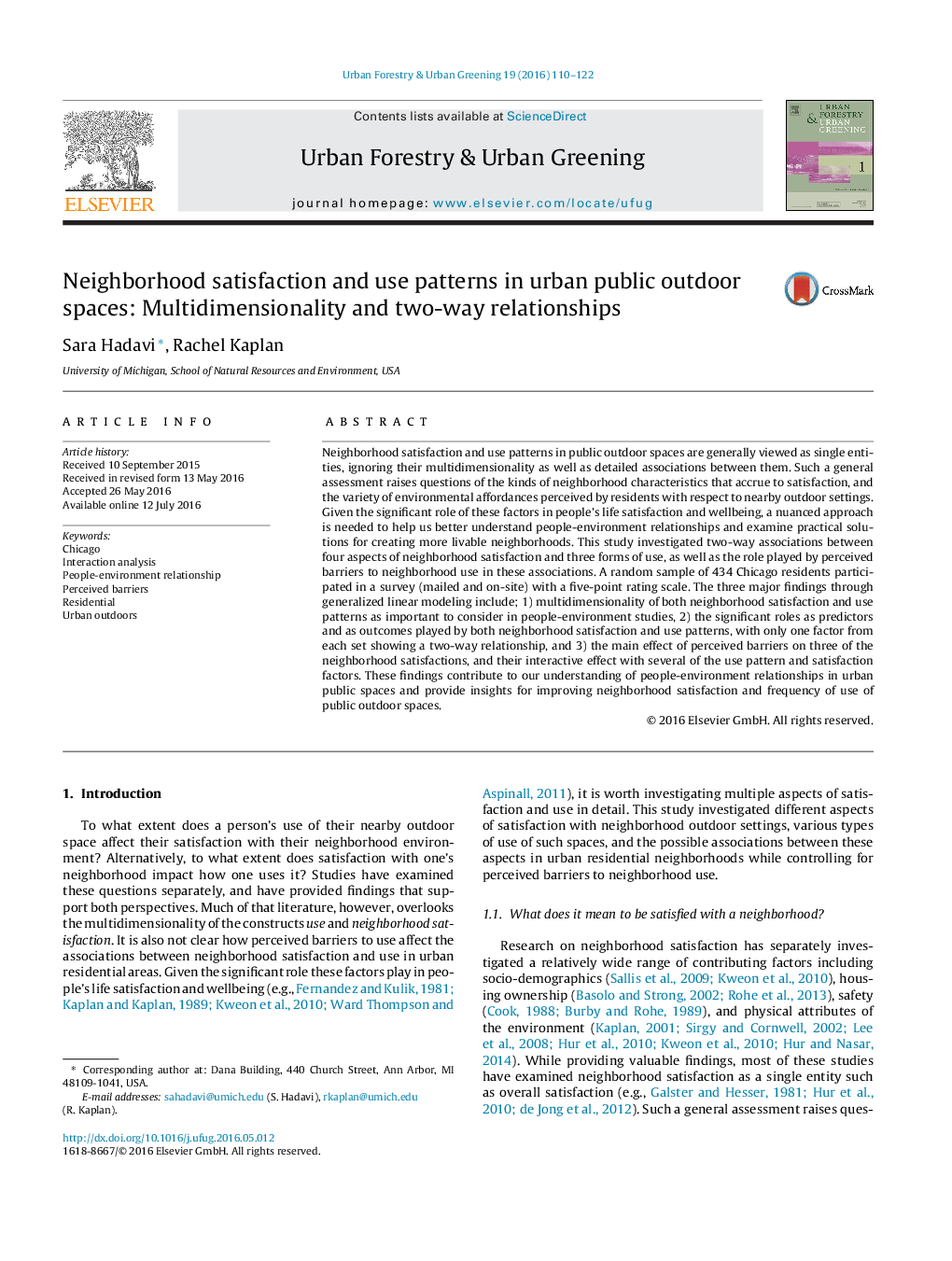| Article ID | Journal | Published Year | Pages | File Type |
|---|---|---|---|---|
| 93921 | Urban Forestry & Urban Greening | 2016 | 13 Pages |
•Consideration of the multidimensionality of both neighborhood satisfaction and use patterns.•Satisfactions may be predictors and outcomes of use patterns.•Use patterns may be predictors and outcomes of neighborhood satisfaction.•Perceived barriers have significant main effect on satisfaction but interactive effect on use.
Neighborhood satisfaction and use patterns in public outdoor spaces are generally viewed as single entities, ignoring their multidimensionality as well as detailed associations between them. Such a general assessment raises questions of the kinds of neighborhood characteristics that accrue to satisfaction, and the variety of environmental affordances perceived by residents with respect to nearby outdoor settings. Given the significant role of these factors in people’s life satisfaction and wellbeing, a nuanced approach is needed to help us better understand people-environment relationships and examine practical solutions for creating more livable neighborhoods. This study investigated two-way associations between four aspects of neighborhood satisfaction and three forms of use, as well as the role played by perceived barriers to neighborhood use in these associations. A random sample of 434 Chicago residents participated in a survey (mailed and on-site) with a five-point rating scale. The three major findings through generalized linear modeling include; 1) multidimensionality of both neighborhood satisfaction and use patterns as important to consider in people-environment studies, 2) the significant roles as predictors and as outcomes played by both neighborhood satisfaction and use patterns, with only one factor from each set showing a two-way relationship, and 3) the main effect of perceived barriers on three of the neighborhood satisfactions, and their interactive effect with several of the use pattern and satisfaction factors. These findings contribute to our understanding of people-environment relationships in urban public spaces and provide insights for improving neighborhood satisfaction and frequency of use of public outdoor spaces.
